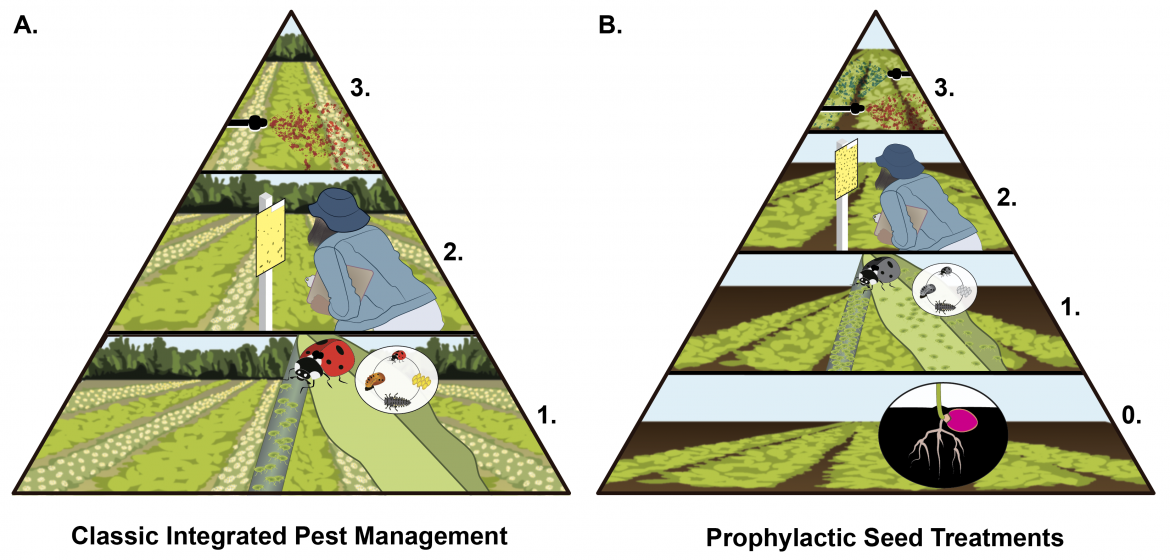
Figure 1. Prophylactic pesticide use is incompatible with classic Integrated Pest Management (IPM). (A) IPM is a decision-making framework developed through place-based research on insect ecology, pest, and natural enemy abundances, and crop economic thresholds, that guides economic decision-making toward more effective and less risky pest management. An IPM risk framework considers chemical controls as a last resort, due to numerous risks associated with their use and overuse, including development of pesticide resistance in pest populations and negative non-target effects on beneficial organismsi. (1) The base of a classic IPM approach is avoidance of pests, accomplished by understanding the pest life cycle and vulnerabilities, and using spatial diversification practices such as hedgerows and flower strips to promote natural enemies that provide biological control and temporal diversification like crop rotations to prevent multiyear pest population build-up. (2) Integral to IPM decision-making is routine and ecologically informed ‘scouting’ to determine pest and natural enemy identity and abundances in crop fields. (3) IPM practitioners use this information to set action thresholds for any subsequent interventions, including release of biological control agents and/or insecticide sprays. (B) (0) Prophylactic seed treatments skip foundational IPM steps, falsely equating seed treatments as preventative for the vast majority of pests. (1) Preventative pesticide treatments can disrupt natural biological control through non-target effects on natural enemies. (2) Outbreaks of secondary pests can occur due to disruptions of natural biological control, leading to increased application and costs of additional chemical controls. (3) Illustration by Sylvia Heredia.
Abstract
Critical ecological interactions can be disrupted by pesticides, leading to serious ecosystem and economic harm. For the most part, however, the extent and magnitude of these impacts are unknown. We argue for increased investigation of ecosystem impacts of common pesticides by scientists and scrutiny by regulators.